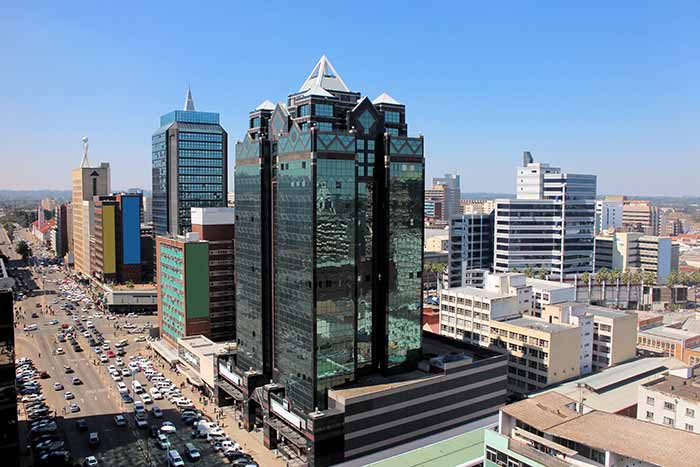web_zimbabwe_shutterstock_153346895.jpg

Harare, Zimbabwe
The bespoke 2, 5, 10 and 20 dollar notes, which will be known as “bond notes”, will have equivalent value to the dollars they are based on and will be backed by $200m from the Africa Export-Import Bank.
Zimbabwe started using the US dollar in 2009 after severe hyperinflation rendered its own currency worthless.
Since then Zimbabwe has been a multi-currency economy, making use of the South African Rand, Chinese Yuan and others as well as the dollar.
The introduction of the new notes, which complement similar “bond coins” brought in 2014, is hoped to ease shortages of the dollar in the country that have seen banks cut withdrawal limits.
A number of other measures were also brought in with the aim of promoting greater use of Zimbabwe’s other alternative currencies, in particular the South African Rand.
Zimbabwe’s Central Bank governor John Mangudya explained that with most products in the country originating in South Africa, it is logical for shop owners and businesses to think in rand terms “as opposed to abstract US dollar prices”, according to the Zimbabwe Herald.
Measures intended to curb the capital flight of US dollars would be introduced with immediate effect, including a $1,000, €1,000 and 20,000 South African rand limit on how much can be taken out of the country, he added.
He stressed that this was not a subtle attempt to reintroduce the discontinued Zimbabwean currency, noting that the “fundamentals are not right for a comeback”.
Zimbabwe’s economy has been under much strain recently, with severe drought, collapsed commodity prices and the appreciation of the dollar taking a heavy toll.
A report from the IMF executive board published yesterday echoed the words of an earlier review by IMF staff: “bold” actions are needed to reverse the economies negative path and overcome the “daunting” challenges this presents.
These include clearing arrears to enable Zimbabwe to reengage with the international community, stepping up structural reforms to raise growth and living standards, and establishing a strong debt management strategy to deal with the country’s “difficult and unique” debt situation.
Zimbabwe currently has $1.8bn outstanding payments due to the African Development Bank, World Bank and International Monetary Fund, while its overall debt stands at more than $7bn – almost half of the country’s gross domestic product.
The fund’s executive directors welcomed the country’s plans to reduce the wage bill and rebalance the budget towards infrastructure development, and recommended broadening the tax base, improving the efficiency of VAT collection and strengthening public financial management and transparency.
Zimbabwe recently appealed for $1.5bn from its private and third sectors to help cover the costs of a devastating drought, induced by the cyclic El-Niño weather pattern, which has plunged the country into a state of emergency.
Nevertheless, Zimbabwe president Robert Mugabe was able to throw himself a lavish 92nd birthday party, racking up an $800,000 bill.












